Castle Howard Dome

Beez Neez now Chy Whella
Big Bear and Pepe Millard
Fri 9 May 2014 22:17
|
The Dome of Castle Howard
 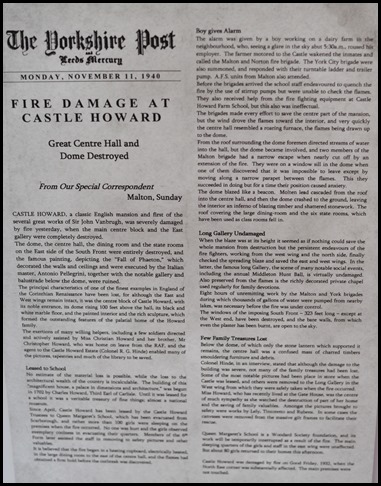 On Monday the 11th of November 1940,
the Yorkshire Post featured the sad story of a fire at
Castle Howard.
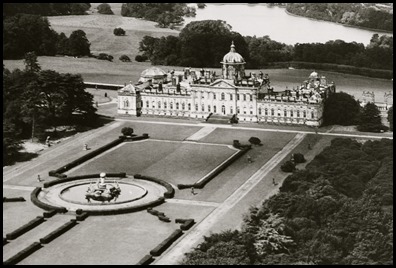 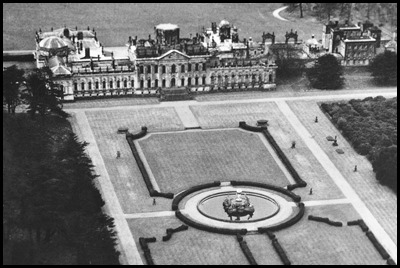 Before and
after the fire.
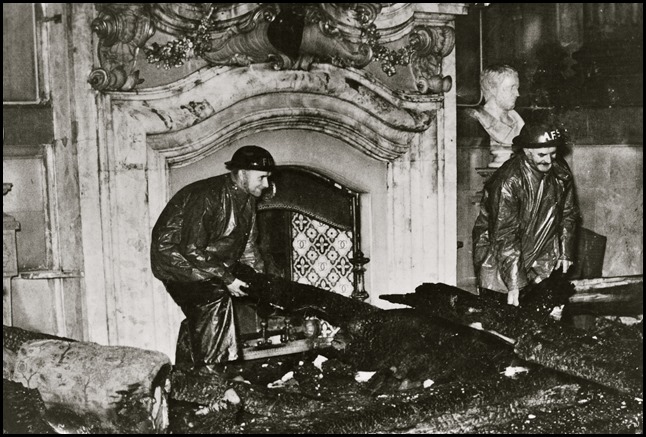 The underside of the dome is
decorated with the story of the Fall of Phaeton, painted by Pellegrini from
1709-12. It depicts the moment when Apollo’s son, Phaeton, stole his father’s
sun chariot and rode it across the skies. Unable to curb the horses he spun out
of control and tumbled to earth in a fiery blaze. Little did anyone realise that
one day this story would literally come true when the dome crashed into the hall in the fire of 1940. During the war Castle Howard was used as a school, it is believed the
fire began in the chimney of the servants kitchen.
 Many things at Castle Howard seem to
happen twice including building of the great central dome. Between 1699 and 1700
Vanbrugh persuaded the 3rd Earl of Carlisle to ornate his new mansion with an
enormous masonry lantern and cupola, which gave Castle Howard a highly
distinctive profile: no other private home in England can boast such an
architectural feature. Completed in 1707, the dome remained the majestic
crowning point of Castle Howard until the calamity of 1940, when it crashed into
the house leaving a tangle of molten lead, charred timber and damaged
stonework.
For the next twenty years Castle
Howard remained a home without a dome until in 1960 Professor E.H. Thompson from
the University of London undertook the challenging task of working out the exact size and scale of Vanbrugh’s dome. Because no
original drawings existed the dimensions had to be arrived at through the
technique of photogrammetry using early, pre-fire photographs of the
house.
Vanbrugh might not have understood
the algebraic calculations and complicated pieces of machinery Thompson and his
team employed but he would have recognised how these were a means to an end –
namely a faithful reconstruction of his great dome.
 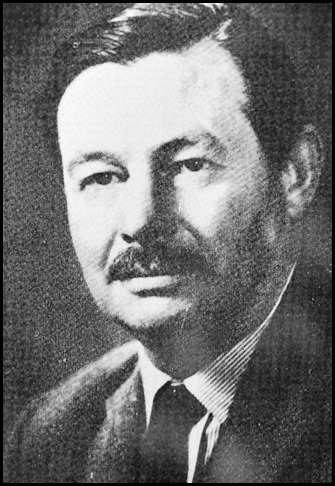 Both Sir John
Vanbrugh and Professor Edward Palmer Thompson
were men of multiple interests and talents. Vanbrugh was a London trader, a
merchant in India, a soldier, a civil servant, a dramatist and theatre
impresario, a knight of the realm and an architect. Thompson was also a soldier,
as well as a mechanical student, scholar, inventor, teacher and connoisseur of
the arts. They also share the unique satisfaction of having built the dome at
Castle Howard.
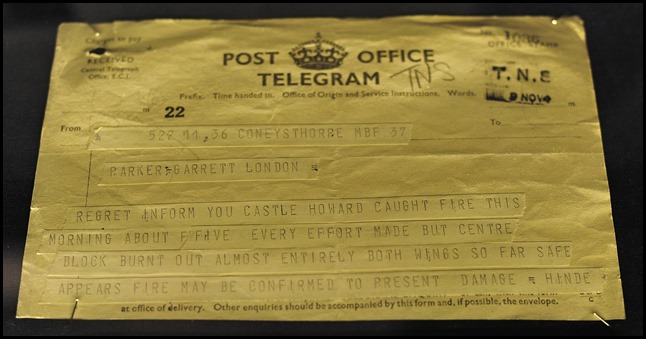 The
telegram from Colonel Hinde, the Agent, informing the Trustees that
Castle Howard had caught fire.
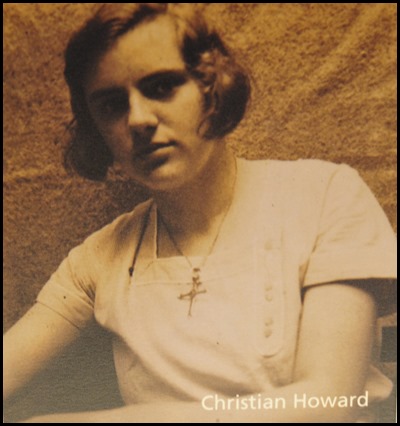 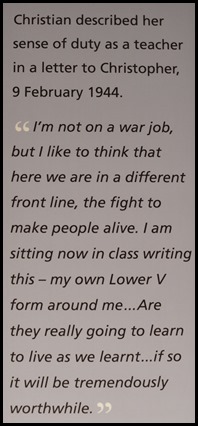 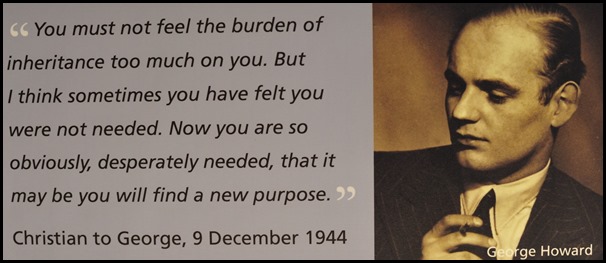 Christian
was a great support to her brother, George, during
this awful time.
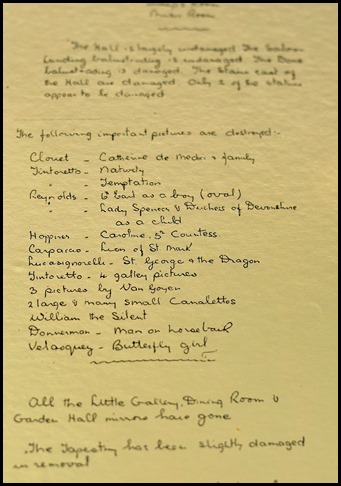 The handwritten
list of some of the important art losses.
In total some twenty rooms were lost,
some with delightful name such as the Kit Cat Room, the Jasmine Room, the
Queen’s Room, the Bullseye Rooms and the Canaletto Room. Nearly one third of the
building was left open to the skies, and although in time the debris would be
cleared and the structure made secure there was no escaping the fact that Castle
Howard had been substantially damaged by the fire. In time these areas would
receive a temporary roof and new windows, but it would be another twenty years
before major restoration began.
The biggest architectural loss was
obviously the dome, to imagine the house without would be to see an ocean-going
vessel without its funnels. The proportion and grandeur of the house are
entirely lost, and the Central Block assumes a strangely stunted
appearance.
 Pupil Elaine
Scott’s list of all she lost in the fire.
   Each side of the Great Hall the staircases show fire damage to
this day.
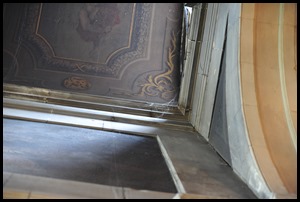 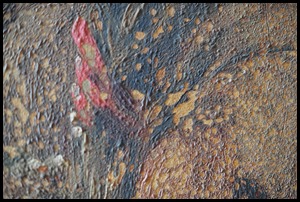  The blackened
ceiling. The scorched paint. The charred stone next to the newer wooden floor.
 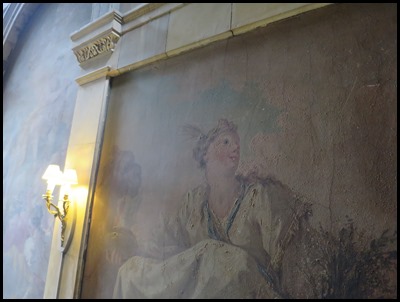 Further along the upper corridor we
entered rooms not yet renovated.
  The dome
today.
In 1962 Scott Medd, a Canadian
artist, was commissioned to reconstruct Pellegrini’s masterpiece – The Fall
of Phaeton. He only had a single black and white photograph of the original
painting to work from, but with careful research into colour and design, and by
examining other examples of Pellegrini’s work, Medd was able to reproduce this
celebrated episode from classical legend fully in the spirit of his Venetian
predecessor. The finished design was scaled up from smaller models and
eventually Medd perched on a scaffold tower, seventy feet high to execute this
dramatic tale.
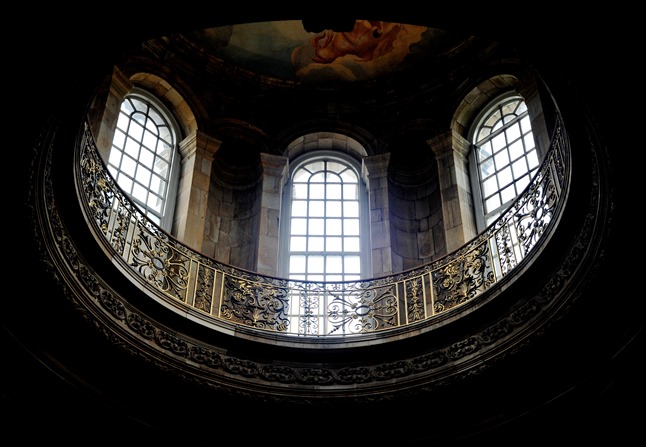 ALL IN ALL REALLY
INTERESTING
CHUFFED THIS UNIQUE STRUCTURE IS AS IT SHOULD
BE |